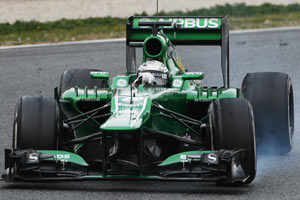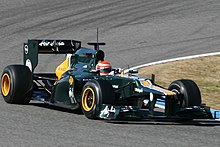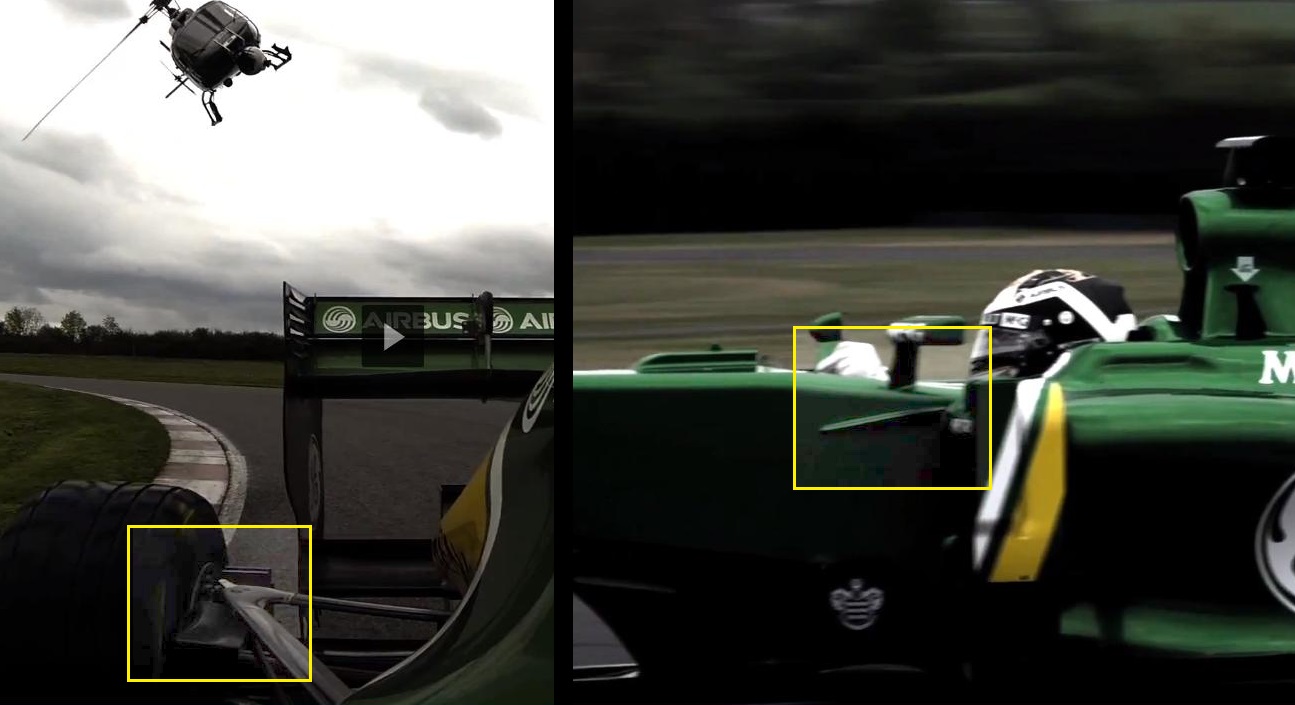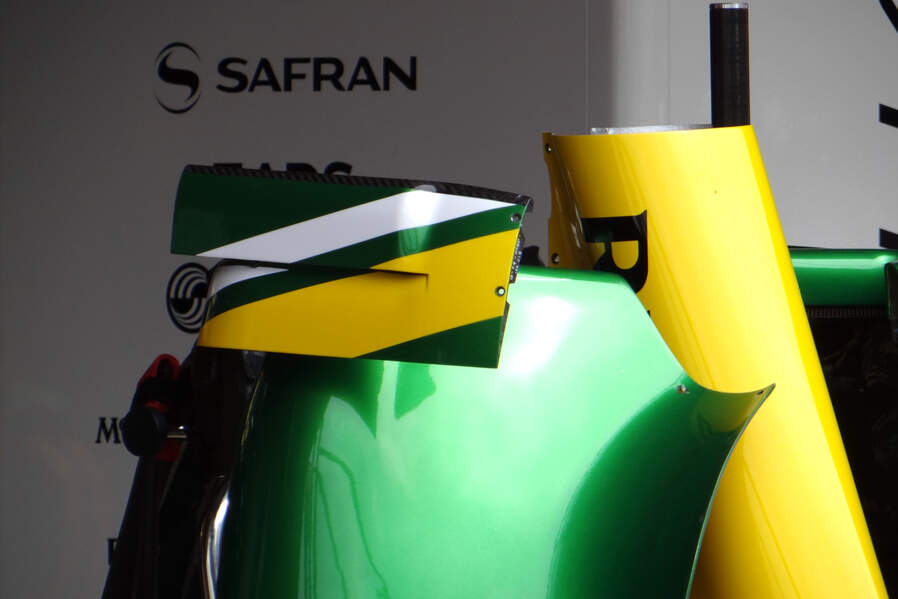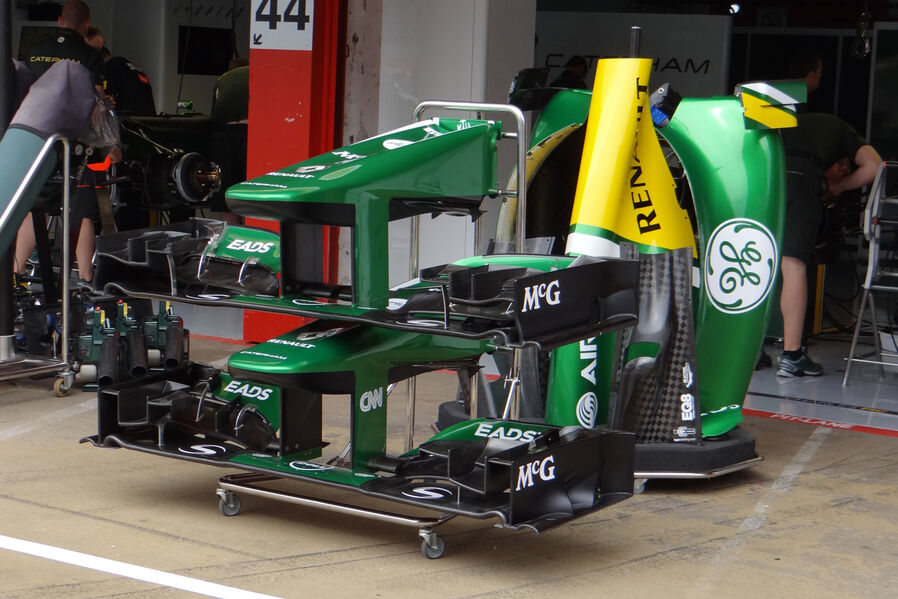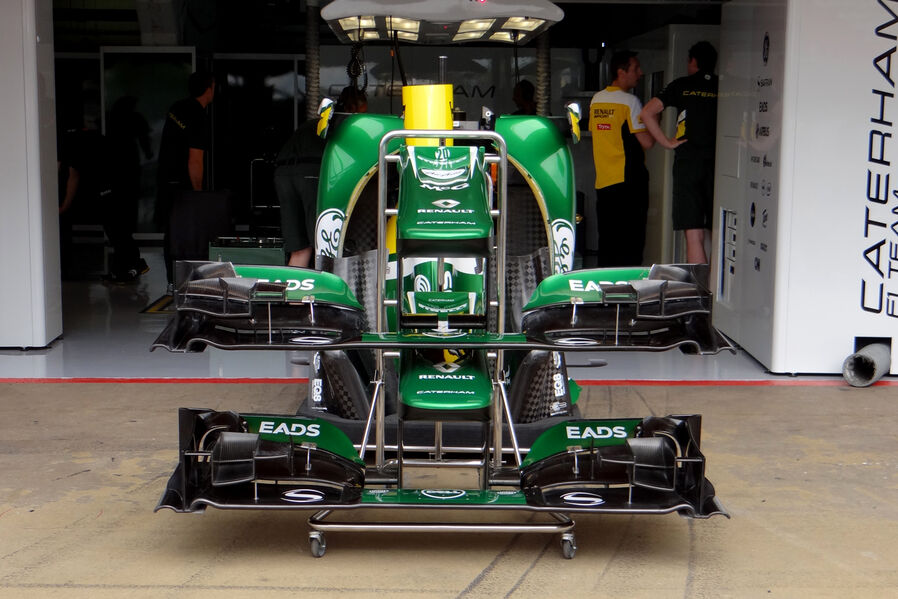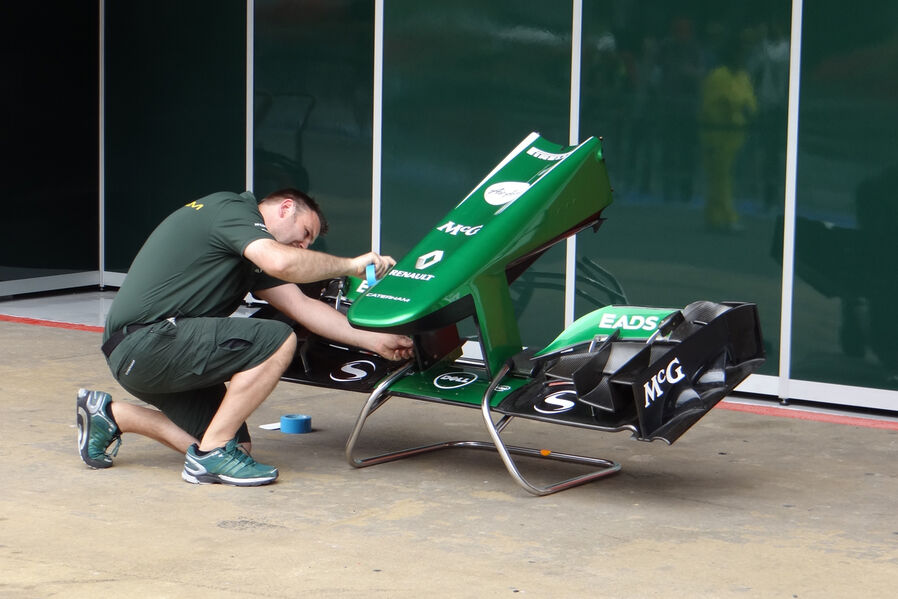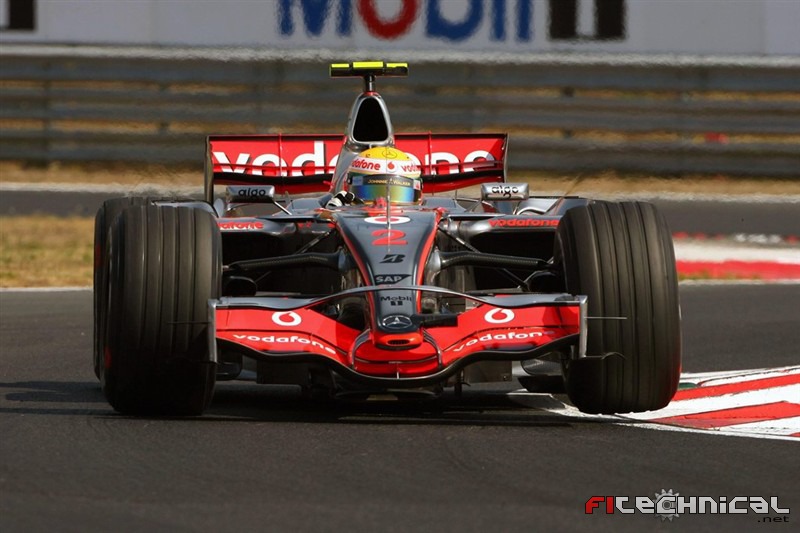beelsebob wrote:RB7ate9 wrote:Upon closer inspection of the nose, IMO the bulge underneath the nose is a bit large (I was expecting Lotus, and got FI instead).
Okay, and you've seen their data and know that Caterham's solution is wrong for their car when? And you've seen Lotus/FI's data and know that their solution is the one that Caterham should have chosen too, right?
I made no such claims as to data of this that or the other. Just based on how the differing teams have used the concept of the bulge underneath their nose cones, I would have guessed that Caterham would rather have a rounded bulge like Lotus:

Which would appear to better coincide with trying to reduce drag off of what was the original slim nose of the Caterham A-spec pre-Spain. But, with the larger nose akin to what FI has done before and continues to have:
2013:

2011:

I do not purport to know what the benefit is of one over the other is in relation to the entire aero package (the larger nose of the Caterham, bound by the FW pylons, would create a simpler and more direct curve between them, rather than necessitating the effects of having a complex curve like on the Lotus nose). I have no the claim to be privy to information regarding the actual benefits of each individual nose design philosophy in hard numbers, just what I observe from my armchair.
Also, they have that large shallow channel on the top of the nose that appears to end at an air dam of the front bulkhead.
I don't know if they are utilizing the Sauber concept, but if they are then they should have a channel feeding air through the nose like Sauber.
They are not. What makes you think that they should, or that it would benefit them in any way here?
For reference – the reason for the channel up the centre of the nose is because Caterham designed last year's chassis with a dip in the middle of the nose, and as such, have to meet up with that dip with the aero somehow.
The reason I brought the air dam up was that the curvature ended what seemed to be abruptly. Hence "appears". Upon the second, closer view, the curvature is not as sharp as I had originally thought, and so hence: "appears". I had forgotten about the dip in the front bulkhead. Mea culpa.
I had no intention of claiming that their solution was right nor wrong (because it just hasn't hit the track yet in any new guise) and so was simply making an observation compared to what I have seen throughout the rest of the field and my own understanding of aerodynamics and engineering. And, while speculation and "oh this car must have it and is doing well and so EVERYONE MUST HAVE IT TO WIN" does not provide concrete empirical evidence to a technical discussion, it is what some people only have. I try to refrain from the "oh this car..." line of thought and utilize what knowledge I have to judge more admirable technical design decisions each team has made even despite their results (Williams' low gearbox, Sauber Sidepods, Lotus nose bulge). In the future, if you would like to know the reasoning behind my opinion (and yes, they were simply opinions and personal expectations), please feel free to ask anytime.
.

